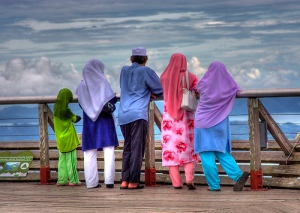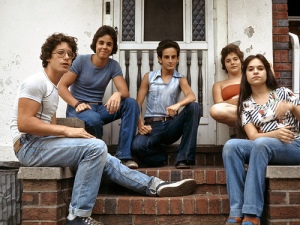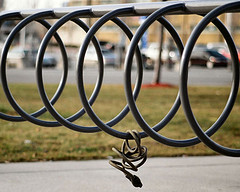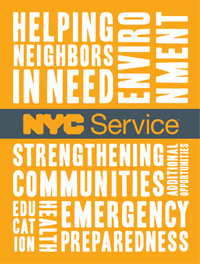 There is an interesting article by Robin Dunbar in The New Scientist: Dunbar’s Number was named after Robin, from his theorizing that humans only had the brain capacity to manage roughly 150 relationships, although depending on gender, social skills and personality, this number could vary from 100-250. Dunbar observes that communication often breaks down when one exceeds 150 individuals (as evidenced in the Crimean War by the Charge of the Light Brigade) and the modern military and businesses only exceed these limits through strict hierarchies.
There is an interesting article by Robin Dunbar in The New Scientist: Dunbar’s Number was named after Robin, from his theorizing that humans only had the brain capacity to manage roughly 150 relationships, although depending on gender, social skills and personality, this number could vary from 100-250. Dunbar observes that communication often breaks down when one exceeds 150 individuals (as evidenced in the Crimean War by the Charge of the Light Brigade) and the modern military and businesses only exceed these limits through strict hierarchies.
Dunbar theorizes that language, laughter and communal music-making evolved as a way to stay connected to a larger group of individuals than possible through physical acts like grooming. Dunbar: “[N]ot only can we speak to many people at the same time, we can also exchange information about the state of our networks in a way that other primates cannot. Gossip, I have argued, is a very human form of grooming.” Christakis and Fowler (in the excellent book Connected) note that “…language is a less yucky and more efficient way to get to know our peers since we can talk to several friends at once but only groom them one at a time. In fact, in a conversation with a small group, we can assess the behavior, health, aggressiveness, and altruism of several individuals simultaneously. Plus, we can talk to someone else while engaged in another activity, like foraging for food in a refrigerator.” Christakis and Fowler note how radical the idea is that language evolved not primarily as a way to exchange information but to maintain group cohesion. “Dunbar estimates that language would have to be 2.8 times more efficient than grooming in order to sustain the [average] group size seen in humans” (one speaker per 2.8 listeners).
While language may have originally evolved, as per Dunbar, to maintain a slightly larger group size, once developed it was in principle possible to use language to maintain social relations on a tribal or national level.
A few other excerpts from Dunbar’s article:
Group living needn’t tax your intelligence too much. In a loose herd, cues such as body size or aggressiveness may be enough to judge whether you should challenge or steer clear of another individual. In bonded networks, however, you need to know each member’s personal characteristics and those of the friends and relations that might come to their aid. Keeping track of the ever-changing web of social relationships requires considerable mental computing power.
As a reflection of this, there is a correlation between the size of a species’ brain– in particular its neocortex– and the typical size of its social groups. In other words, brain size seems to place a limit on the number of relationships an individual can have. This link between group size and brain size is found in primates and perhaps a handful of other mammals that form bonded societies such as dolphins, dogs, horses and elephants. In all other mammals and birds, unusually large brains are found only in species that live in pair-bonded (monogamous) social groups.
As group size increases so too does the number of relationships that need servicing. Social effort is not spread evenly. Individuals put most effort into their closest relationships to ensure that these friends will help out when they need them. At the same time they maintain the coherence of the group. As a result, social networks resemble a nested hierarchy with two or three best friends linked into larger groupings of more casual friends, and weaker relationships bonding the entire group. This hierarchy typically has a scaling ratio of three– each layer of decreasing intimacy is three times larger than the one before it….
HUMAN SOCIAL NETWORKS
Our social networks can have dramatic effects on our lives. Your chances of becoming obese, giving up smoking, being happy or depressed, or getting divorced are all influenced by how many of your close friends do these things. A good social network could even help you live longer since laughing with friends triggers the release of endorphins, which seem to “tune” the immune system, making you more resilient to disease. So what factors influence the form and function that our social networks take.
In traditional societies, everyone in the community is related to everyone else, either as biological relatives or in-laws. In post-industrial societies this is no longer true– we live among strangers, some of whom become friends. As a result, our social circles really consist of two separate networks– family and friends– with roughly half drawn from each group.
Because the pull of kinship is so strong, we give priority to family, choosing to include them in our networks above unrelated individuals. Indeed, people who come from large extended families actually have fewer friends. One reason we favour kin is that they are much more likely to come to our aid when we need help than unrelated individuals, even if these are very good friends.
Family and friend relationships differ in other important ways, too. One is that friendships are very prone to decay if untended. Failure to see a friend for six months or so leaves us feeling less emotionally attached to them, causing them to drop down through the layers of our network hierarchy. Family relationships, by contrast, are incredibly resilient to neglect. As a result, the family half of our network remains constant throughout most of our lives whereas the friendship component undergoes considerable change over time, with up to 20 per cent turnover every few years.
More than 60 per cent of our social time is devoted to our five closest friends, with decreasing amounts given over to those in the layers beyond, until at the edge of the 150 layer are people we perhaps see once a year or at weddings and funerals. Nevertheless, the outer reaches of our social networks have a positive role to play. The sociologist Mark Granovetter at Stanford University in California has argued that these weak links in our social networks are especially useful in the modern world. It is through this widespread network of contacts that we find out about job vacancies and other economic or social opportunities. More importantly, perhaps, 70 per cent of us meet our romantic partners through these contacts.
Read “Getting Connected” by Robin Dunbar (New Scientist, 4/3/12)





![Comparison of odds (lnOR) of decreased mortality across several conditions associated with mortality [Holt-Lunsted et. al meta-analysis]](https://socialcapital.files.wordpress.com/2012/02/journal-pmed-1000316-g0061.png?w=500&h=280)







